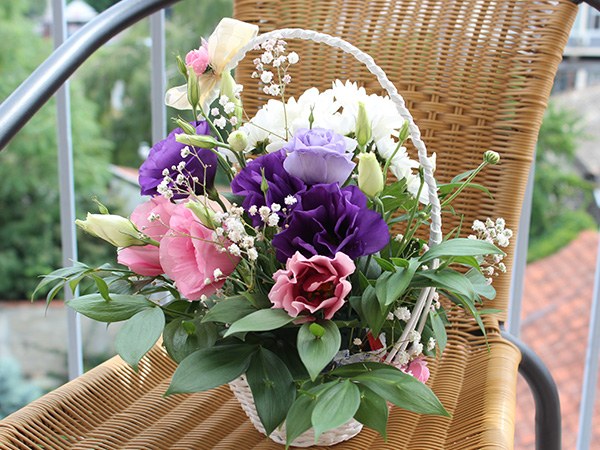
Photo Credit: Lazar Gugleta, Unsplash
I love May Day, the first day of the merry month of May. As a child we made May Baskets the night before, and hung them on our neighbor’s doors before breakfast. They were small, with a few flowers and a wrapped chocolate or two. For my birth mother a celebration meant an opportunity for the best chocolate she could buy. Sometimes she would make fudge, but mostly that happened when she was frustrated and/or angry and needed to stand in the kitchen and beat the mixture in the bowl until it was completely smooth. I can taste her thick, creamy fudge now by memory. After she died my father married again, and his second wife filled their lives with flowers. She would copy bouquets sent to her in fabric flowers. She and my father would start May 1 to put in flats of petunias of all colors, a border to her house, perhaps a symbolic border to her life. Flowers are May Day, gathered in the early morning to make presents and circlets of apple blossoms to crown the dancers weaving the ribbons, lowering the flower wreath down the May Pole to wed the ground.
Last year I wrote about the Cross-Quarter Beltane holding the Element Fire, and both its destructive and constructive faces. There were recent devastating fires very near home and worldwide. Living post those events, one reader wrote about how hard it was to remember anything constructive about fire. Another wrote about how, having lost everything, a new and different life was forming from the ashes.

Photo Credit: Melissa Westbrook
This year it’s to the bonny May I find myself turning, to the Flower Queen and her consort the Green Man, Robin Hood and Marion. I want to dance the May Pole to the bagpipe, and leap the Beltane bonfire. I invite you to remember all that with me in this blog, Beltaine: Welcome the Matron and Patron of Summer. Next year perhaps we’ll explore Mary (of Jerusalem, Bethlehem, Nazareth, Egypt, back to Jerusalem, dying in Ephesus). There is so much to know about this Mary, Maiden and Matron and the Queen of the May. The Patriarchal Roman Christian church suppressed much of what was known about her, but the knowledge is held in the Quran, for she is an honored figure in the Muslim world. ‘Mary, daughter of Imran’ is revered in Islam as the only woman named in the Quran, which refers to her seventy times and explicitly identifies her as the greatest woman to have ever lived. In the Quran, her story is related in three Meccan surahs (19, 21, 23) and four Medinan surahs (3, 4, 5, 66).




